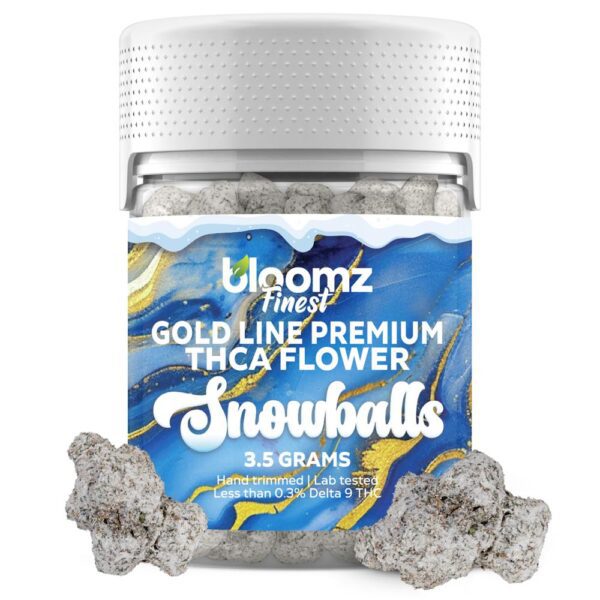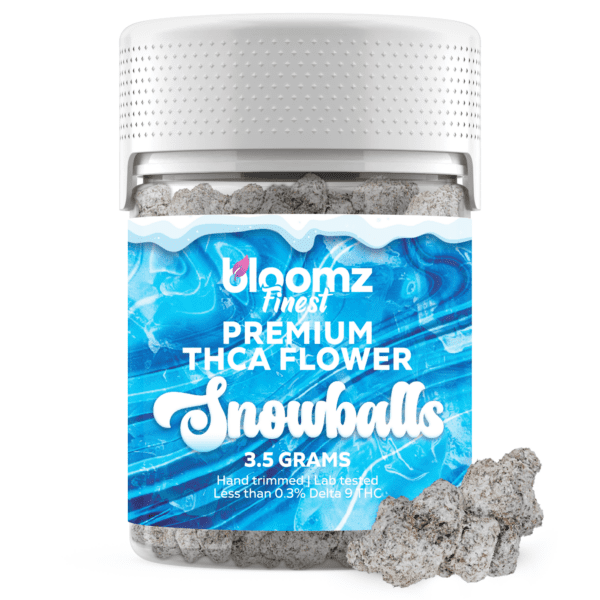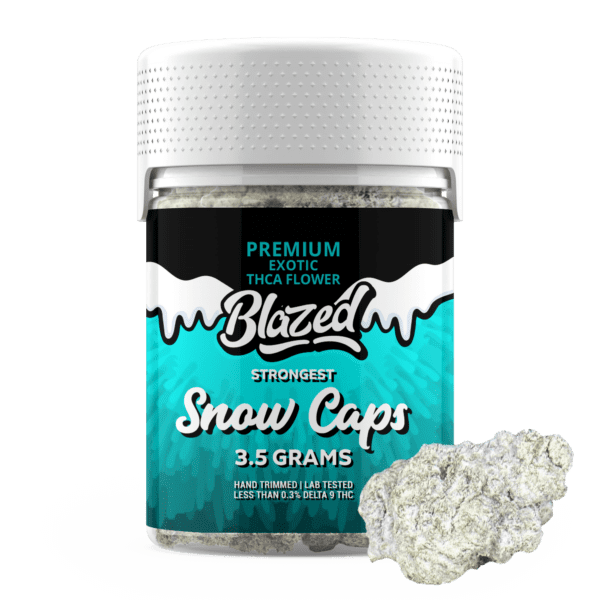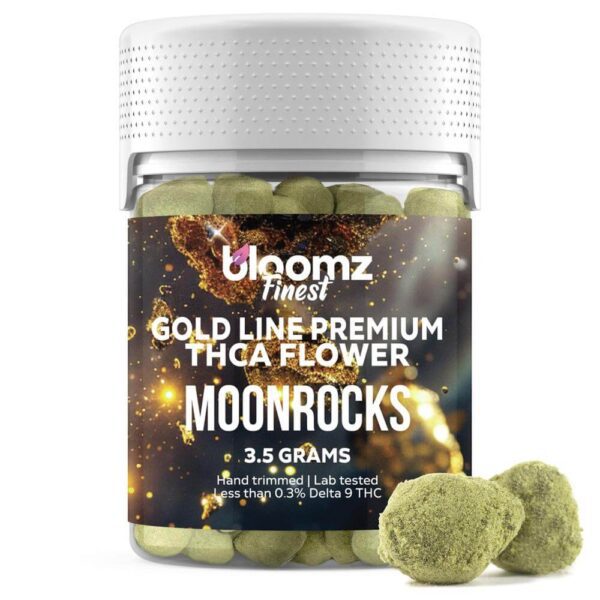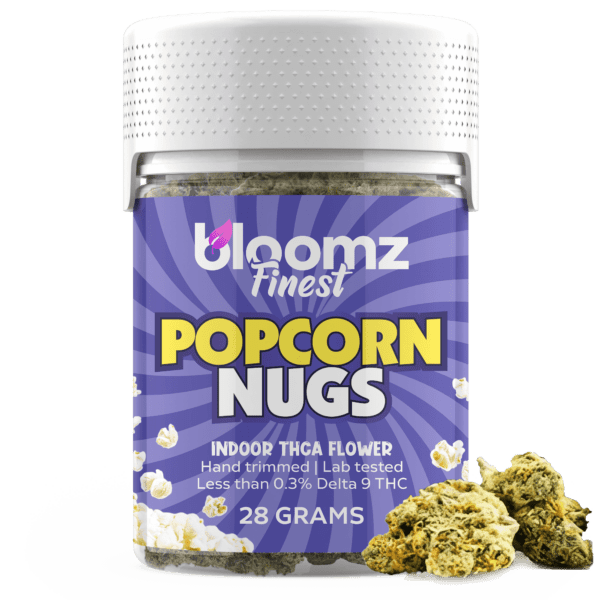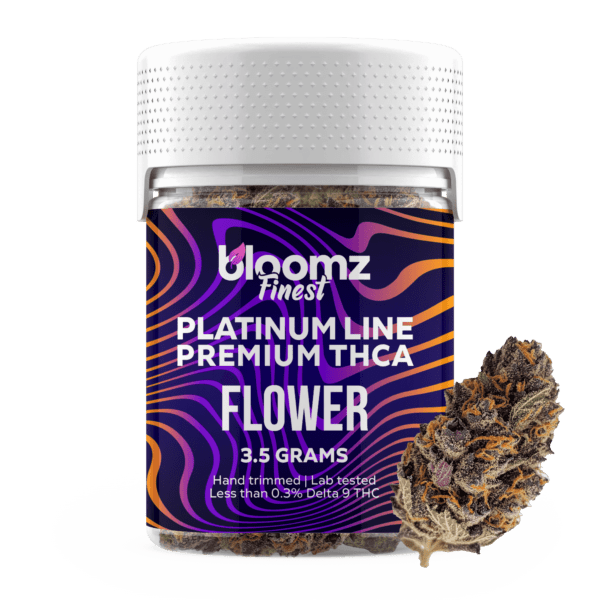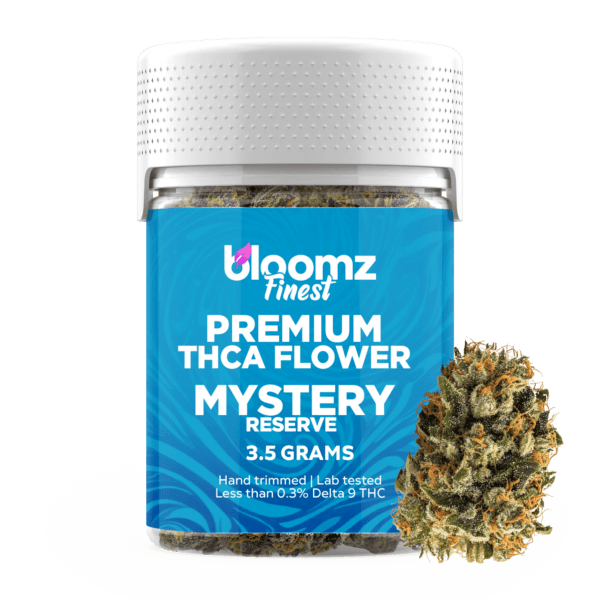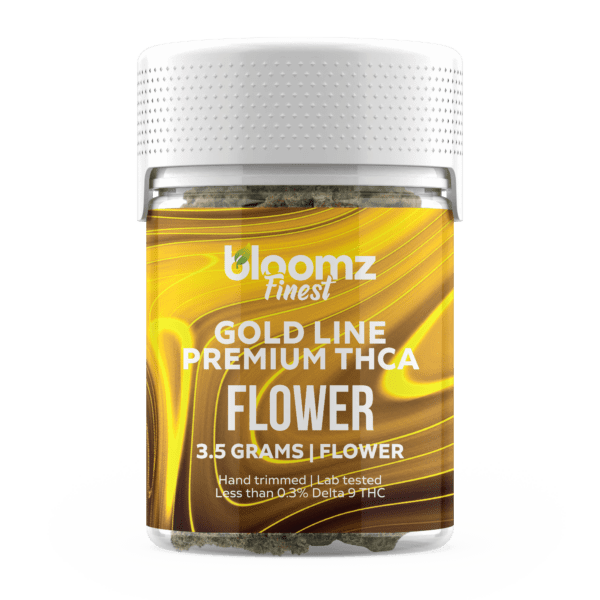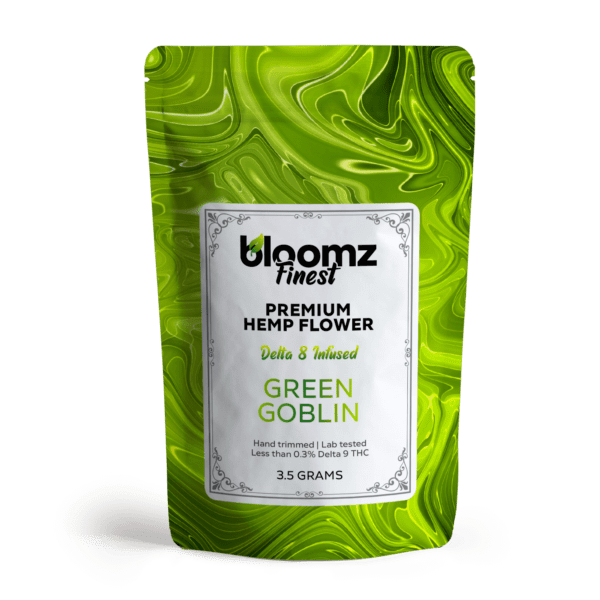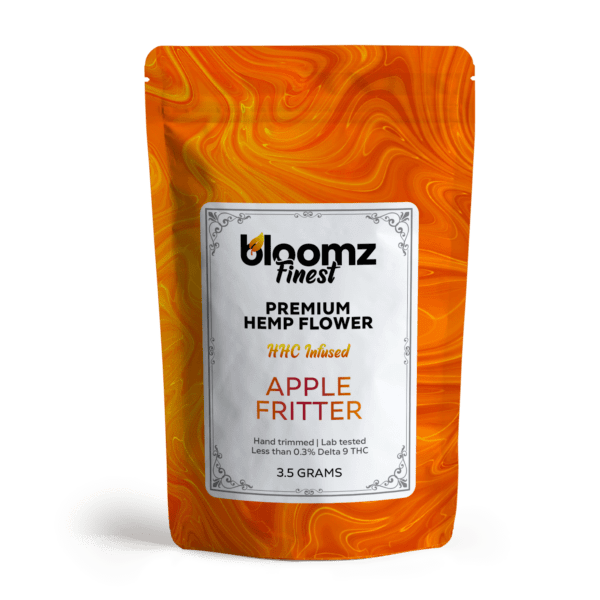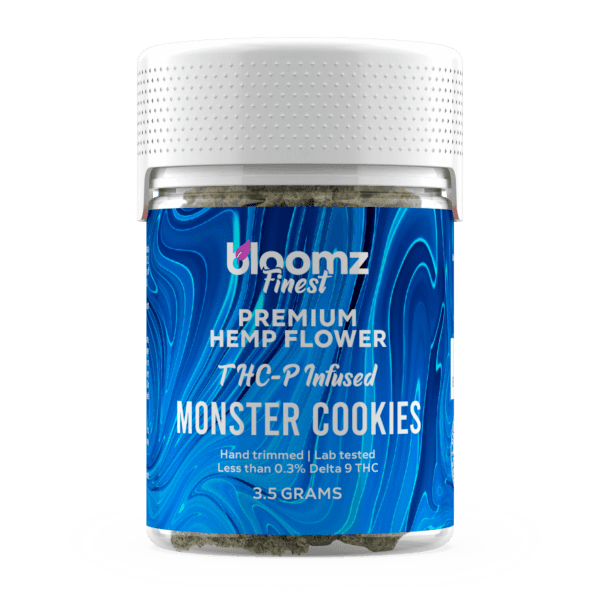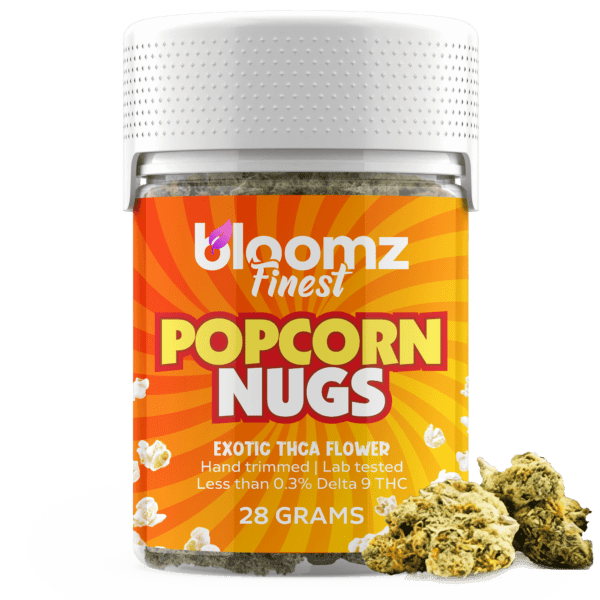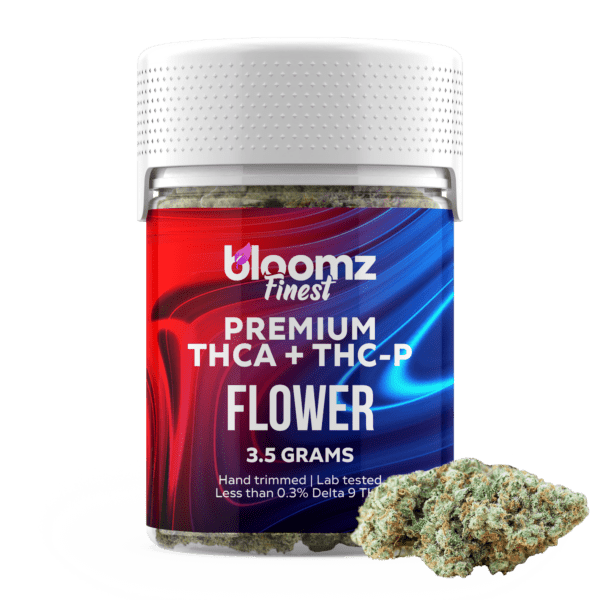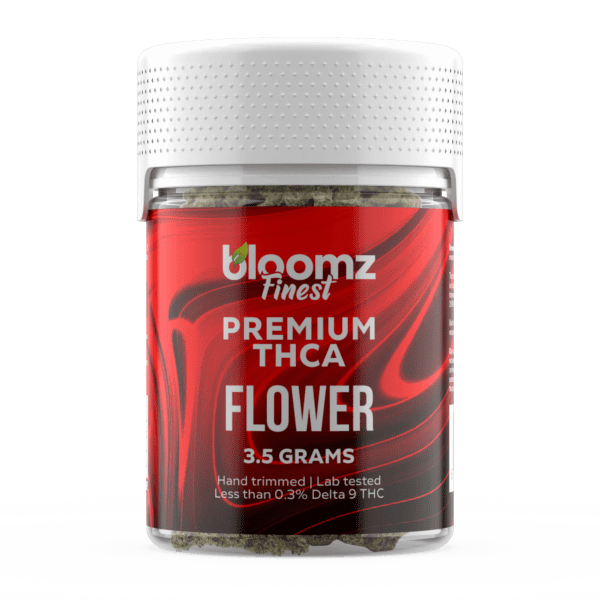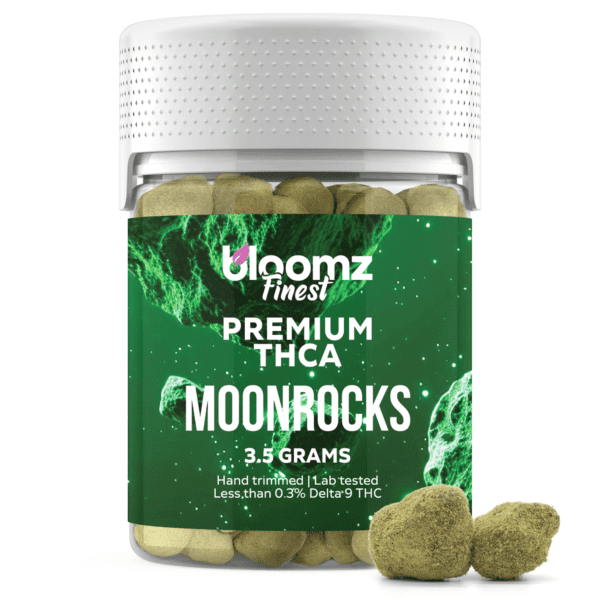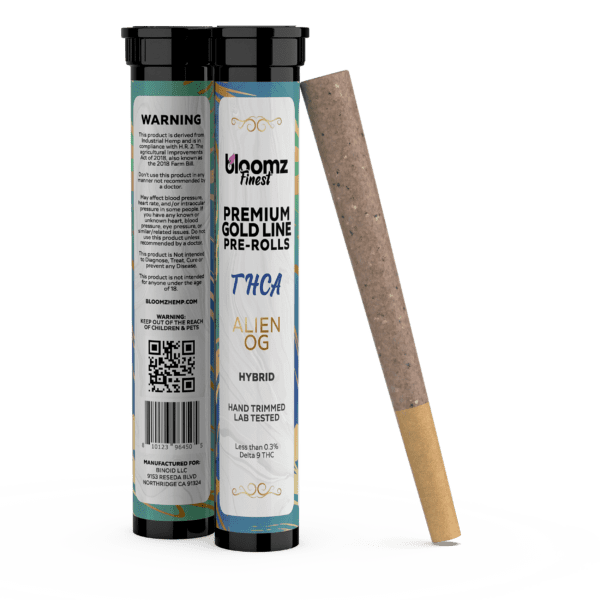Step aside plain flower, 2025 is rolling out intensely potent creations like THCA Snowballs! These aren’t your average buds; picture premium hemp flower generously coated in a glistening layer of pure THCA isolate, creating a visually stunning product that packs a serious punch. The “snowball” effect isn’t just for looks—it signifies a dramatically enhanced concentration of THCA. But achieving that perfect, potent snowball takes real finesse; it’s about using quality core flower, pure isolate, and applying it just right. Amidst the growing options, how do you identify the brands that are truly mastering this high-THCA craft, delivering consistent quality and reliable effects? That’s exactly what we’re unpacking today: a look at the top producers rolling out the best THCA Snowballs this year.
TO BUY THCA FLOWER SNOWBALLS CLICK HERE
THCA 101
Tetrahydrocannabinolic acid (THCA) is a non-psychoactive cannabinoid found in raw and live cannabis plants. It’s the acidic precursor to tetrahydrocannabinol (THC), the well-known psychoactive compound in cannabis. In its natural state within the plant, THCA does not produce the “high” associated with cannabis use because its molecular structure prevents it from effectively binding to the CB1 receptors in the brain. Biosynthetically, THCA is produced from cannabigerolic acid (CBGA) by the enzyme THCA synthase within the cannabis trichomes.
However, when THCA is exposed to heat through processes like smoking, vaping, or baking/cooking, it undergoes a chemical reaction called “decarboxylation”, losing a carboxyl group and converting into THC. This transformation activates the psychoactive properties, allowing THC to interact with the brain’s cannabinoid receptors and produce various effects based on scientific and anecdotal evidence such as euphoria, altered perception, and blissfulness.
Crafting THCA-based products in general requires a meticulous approach, starting with the careful selection of premium cannabis strains. Let’s break it down though, shall we:
Harvesting: The initial step involves the careful harvesting of mature cannabis plants at their optimal stage. This stage is critical because it determines the highest concentration of THCA present within the plant material. Skilled cultivators monitor the trichomes, the resin glands where cannabinoids are produced, to pinpoint the precise moment of peak maturity. Harvesting too early or too late can significantly impact both the quality and potency of the final product. The plants are typically hand-harvested to minimize damage and preserve the delicate trichomes. This process requires a keen eye and extensive knowledge of the specific strain’s growth cycle.
Freezing: Immediately following harvest, the cannabis plants are flash-frozen to preserve the delicate THCA molecules. Rapid freezing prevents the degradation of THCA into Delta-9 THC, which is crucial for maintaining the desired chemical profile. This step is essential for preserving the integrity and potency of the final product. The frozen plants are then stored in specialized freezers at extremely low temperatures to maintain their quality. This immediate freezing process ensures that the THCA remains stable and does not convert prematurely.
Extraction: The next step involves extracting the THCA from the frozen plant material using advanced techniques. This extraction process typically employs methods like CO2 extraction, which uses pressurized carbon dioxide to separate the THCA. Solventless extraction methods, such as rosin pressing or ice water extraction, are also used to avoid residual solvents. These methods are carefully controlled to ensure the highest purity and yield of THCA. The extraction process is critical for isolating the desired cannabinoid from the plant’s other compounds.
Crystallization: Following extraction, the THCA is often crystallized to achieve a high purity level. This process involves dissolving the extracted THCA in a solvent and then gradually removing the solvent to form crystals. Crystallization is a critical step in refining the THCA, as it helps to remove any remaining impurities. The resulting THCA crystals are highly pure and potent. This step ensures a consistent and high-quality product.
Purification: After crystallization, the THCA may undergo further purification to remove any residual impurities or solvents. This step is crucial for ensuring the safety and quality of the final product. Techniques such as chromatography or distillation may be used to further refine the THCA. Rigorous testing is conducted to verify the purity and potency of the purified THCA. This ensures that the product meets the highest standards of quality and safety.
Packaging: The final step involves carefully packaging the refined THCA extract to maintain its potency and freshness. Specialized containers and packaging materials are used to protect the THCA from light, air, and moisture. Proper packaging is essential for preserving the quality and shelf life of the product. The packaged THCA is then stored and distributed under controlled conditions to ensure that it reaches consumers in optimal condition. This meticulous packaging process ensures that the consumer receives a high quality and safe product.
Getting Familiar with THCA Flower: From Seed to Sale
The journey from a mature cannabis plant containing THCA to a packaged THCA flower product is a delicate process focused on preservation and quality. Here’s a detailed breakdown of how THCA flower is made after the cannabis plant has grown and the THCA has been created within it:
Phase 1: Harvesting at the Apex of THCA Content
Precise Timing is Key: Growers don’t just harvest based on a calendar date. They meticulously observe the trichomes, those tiny, crystalline glands on the buds and sugar leaves. These are the powerhouses of cannabinoids and terpenes.
Visual Inspection with Magnification: Using jeweler’s loupes or digital microscopes, growers examine the color and shape of the trichome heads.
Clear Trichomes: Indicate the plant is still developing, and THCA levels may not be at their peak.
Cloudy/Milky White Trichomes: This is generally considered the optimal window for harvesting THCA-rich flower. The THCA content is typically at its highest, and the terpene profile is well-developed.
Amber Trichomes: Signal the beginning of THCA degradation into THC. While some growers prefer a mix for specific effects, the goal for THCA flower is often to harvest before significant ambering.
Understanding Cannabinoid Synthesis: Growers understand the plant’s internal processes. Environmental factors like light cycles and nutrient availability influence cannabinoid production. Harvesting at the right stage ensures the plant has dedicated its energy to producing THCA rather than converting it.
Gentle Handling: To protect the fragile trichomes, harvesting is often done with care.
Hand-Cutting: Individual branches or the entire plant may be cut by hand. This allows for selective harvesting if different parts of the plant mature at varying rates.
Avoiding Trichome Damage: Rough handling can cause trichomes to break off, leading to a loss of valuable THCA and terpenes.
Phase 2: The Critical Drying Stage
The primary goal of drying is to reduce moisture content to a level that prevents mold and mildew growth while preserving the chemical profile of the flower.
Controlled Environment is Paramount: Drying is not a passive process. It requires a carefully managed environment.
Darkness: Light, especially UV light, can degrade cannabinoids and terpenes. Drying rooms are kept dark or dimly lit.
Temperature Regulation: Ideal temperatures typically range from 60-70°F (15-21°C). Higher temperatures can cause terpenes to evaporate and may speed up THC conversion.
Humidity Control (45-55% RH): This range allows for a slow and even drying process. Too high humidity can lead to mold; too low can cause the flower to dry too quickly, potentially trapping chlorophyll and resulting in a harsh taste. Dehumidifiers or humidifiers are used to maintain this balance.
Air Circulation: Gentle airflow is essential to prevent stagnant air and promote even drying. Small fans are often used, directed away from the buds to avoid excessive drying of the outer layers.
The Drying Process – Step-by-Step:
Hanging or Rack Drying: Harvested branches are often hung upside down or placed on mesh racks in the drying room. This allows for air to circulate around all sides of the buds.
Monitoring Moisture Loss: Growers regularly monitor the moisture content of the buds. This can be done using moisture meters or by feel.
The “Snap Test”: A common indicator of proper drying is when small stems snap cleanly when bent, rather than bending limply. This usually takes anywhere from several days to two weeks, depending on environmental conditions and bud density.
Avoiding Over-Drying: Overly dry flower becomes brittle, loses terpenes, and can be harsh.
Recommended products
-
THCA Smalls
$149.99$256.99 -
THCA Flower – Platinum Line
$49.99$79.99 -
THCA Flower – Mystery Reserve
$41.99$79.99 -
THCA Flower – Indoor Exotics – Gold Line
$37.99$69.99
Phase 3: The Art of Curing for Enhanced Quality
Curing is a slow aging process that significantly improves the aroma, flavor, and overall quality of the THCA flower.
Airtight Containers: Once the buds are sufficiently dried, they are carefully placed into airtight containers.
Glass Jars: Mason jars are a popular choice due to their inert nature and airtight seals.
Food-Grade Plastic Containers: Some growers use these, but it’s crucial to ensure they don’t leach chemicals or retain odors.
Filling Levels: Jars are typically filled loosely, leaving some headspace for air exchange.
Controlled Curing Environment: Similar to drying, the curing environment is crucial.
Cool and Dark: To continue preventing degradation.
Consistent Temperature: Avoiding significant temperature swings is important.
The Curing Process – Step-by-Step:
Initial “Burping”: For the first week or two, the jars are opened (burped) once or twice a day for a short period (15-30 minutes). This allows excess moisture trapped inside the buds to escape and fresh oxygen to enter. The smell during burping can also indicate if the curing process is going well or if there are issues like mold.
Humidity Monitoring: Small hygrometers are often placed inside the jars to monitor the relative humidity. The ideal range during curing is typically 55-65%. If the humidity is too high, burping frequency may need to increase. If it’s too low, humidity packs designed for cannabis can be used.
Extended Curing: The curing process can last anywhere from two weeks to several months, depending on the desired level of refinement. Longer curing times can further break down chlorophyll and allow the terpene profiles to fully develop and meld.
Monitoring for Issues: Throughout the curing process, growers regularly inspect the buds for any signs of mold or mildew. Any affected buds are immediately removed to prevent contamination of the entire batch.
Phase 4: Trimming for Aesthetics and Concentration (Often Performed After Drying or Curing)
Removing Unwanted Material: Trimming involves removing the larger fan leaves and smaller sugar leaves that extend from the buds. These leaves contain fewer trichomes and can be less desirable for consumption.
Two Main Methods:
Wet Trimming: Done immediately after harvesting, before drying. This can speed up the drying process but may also lead to a loss of some trichomes.
Dry Trimming: Done after the buds have been dried. This is often preferred as it is believed to better preserve trichomes. However, it can be more time-consuming.
Hand Trimming vs. Machine Trimming:
Hand Trimming: Considered the premium method. It allows for greater precision and gentler handling of the buds, minimizing trichome damage. Skilled trimmers carefully remove leaves while preserving the shape and structure of the THCA flower.
Machine Trimming: Used for larger-scale operations to increase efficiency. While faster, it can be less precise and may result in some trichome loss.
Phase 5: Quality Assurance and Testing
Ensuring Potency and Safety: Reputable producers subject their THCA flower to rigorous testing by third-party laboratories.
Key Tests Conducted:
Cannabinoid Profile Analysis: This determines the exact percentages of THCA, THC, CBD, and other cannabinoids present in the flower. Consumers rely on these results to understand the potency of the product.
Terpene Profile Analysis: Identifies and quantifies the various terpenes present, providing insights into the aroma, flavor, and potential effects of the flower.
Contaminant Testing: Crucial for consumer safety. This includes testing for:
Pesticide Residues: To ensure the THCA flower was grown without harmful chemicals.
Heavy Metals: To check for absorption of toxic elements from the soil or growing environment.
Microbial Contaminants: To detect the presence of mold, mildew, and harmful bacteria.
Residual Solvents: If any extraction processes were involved (though less common for flower), this tests for leftover solvents.
Certificate of Analysis (COA): The results of these tests are typically compiled into a COA, which reputable producers make readily available to consumers. This transparency builds trust and allows consumers to make informed decisions.
Phase 6: Careful Packaging and Storage for Distribution
Protecting the Finished Product: Proper packaging is essential to maintain the quality and potency of the THCA flower during transportation and storage.
Packaging Requirements:
Airtight and Smell-Proof: To prevent terpene loss and maintain freshness.
UV Protection: To prevent cannabinoid degradation from light exposure. Dark or opaque packaging is often used.
Child-Resistant: In many regulated markets, packaging must be child-resistant.
Informative Labeling: Clearly indicating the product name, cannabinoid content (especially THCA percentage), net weight, producer information, and often a QR code linking to the COA.
Storage Recommendations: Even after packaging, proper storage is important. Cool, dark environments are ideal to maximize shelf life and prevent degradation.
By following these detailed steps, cultivators and producers aim to create high-quality THCA flower that retains its potency, aroma, flavor, and overall appeal for consumers. Plus, abides by the 2018 Farm Bill. The emphasis throughout the process is on careful monitoring, environmental control, and gentle handling to preserve the delicate trichomes and the valuable compounds they contain.
Recommended products
A Blizzard of Hemp Enjoyment: THCA Snowballs
“THCA snowballs” refers to cannabis flower, typically of high quality, that has been coated with a layer of pure THCA isolate, resembling a dusting of snow. This process significantly increases the overall THCA content and therefore the potential potency of the flower once it is heated and decarboxylated. The base flower used for snowballs can vary in strain and quality, but the addition of the THCA isolate aims to provide a more intense experience. Visually, THCA snowball stand out due to their frosty, white appearance from the crystalline THCA. Their size can vary depending upon how they are cultivated. Also, consumers often choose this type of product for its elevated potency and the concentrated effects that can be achieved when vaporized or smoked.
How We Came Up with a List of Top THCA Snowballs Brands
Selecting the “Top THCA Snowballs Brands” in this current hemp marketplace was slightly challenging. With a reasonable number of brands vying for attention, particularly in the high-potency segment, we carefully assessed some crucial factors to make this list happen. Basically, the intent was to highlight brands that continuously deliver in numerous facets, specifically as it pertains to the specialized production of THCA Snowballs based on the following::
Making Sure the THCA Snowballs are High in Quality and Purity: Evaluating THCA Snowballs requires a dual focus: assessing the quality of the base THCA flower before coating, along with verifying the purity and potency of the THCA isolate used for the exterior layer. Premier brands start with well-cultivated, aromatic flower and utilize high-purity (often 99%+) THCA isolate, ideally substantiated by accessible lab tests for both components and the final snowball. The application process is also key; the isolate should thoroughly encase the bud with good adhesion, minimizing loose powder and avoiding unwanted residual solvents, ensuring a clean, potent final product.
THCA Snowballs Variety (Indoor/Outdoor Grown, Possible Exotic/Boutique Options, Sizes, Isolate Used, Packaging, etc.): Even within this specialized product type, variety allows consumers to tailor their experience. This can include differences in the base flower used—whether it’s indoor or outdoor grown, a standard strain or a premium exotic/boutique option, or even different bud sizes like ‘smalls’ specifically used for snowballs. The type of THCA Flower isolate (e.g., fine powder, coarser crystals) might also vary, impacting texture and appearance. Offering different product sizes (e.g., jars of various weights) and utilizing packaging that protects the delicate snowball structure and coating are important considerations.
Terpenes and Strains (Indica/Sativa/Hybrid) Infused into the THCA Snowballs: While the immense potency comes from the THCA isolate coating, the underlying base flower’s terpene profile is the primary driver of the Snowball’s aroma, flavor character, and the nuances influencing the overall experience (like potentially promoting relaxation or a more blissful state). Top producers select flavorful base strains (Indica, Sativa, or Hybrid) and preserve their terpenes through careful handling. The final sensory experience is a unique interplay between these original THCA flower terpenes and the potent, largely neutral isolate coating. Information about the base strain used is valuable consumer information.
Customer Reviews: Feedback from users who have actually experienced a brand’s THCA Snowballs is incredibly insightful, especially given the high potency involved. We looked closely at reviews commenting on the perceived intensity of effects, the visual appeal (the ‘snowball’ look, coating thickness and evenness), the underlying taste and smell (reflecting base flower quality), and the integrity of the coating (did it stick well?). Consistently high marks for potency, appearance, and overall satisfaction signal a brand that’s producing quality Snowballs. Negative comments often focus on potency falling short of expectations or poor coating application.
Brand Reputation: Trust is paramount when dealing with highly concentrated products like THCA Snowballs. A brand’s reputation, built on consistent quality, transparent practices (especially regarding lab testing for potency and purity), reliable customer service, and adherence to safety standards, is crucial. We assessed how brands are perceived within the hemp community, their history with potent products, and their overall professionalism. Consumers need confidence that the high THCA levels are accurate, and the product is cleanly made, thus making reputation a key factor in choosing a Snowball provider.
Top THCA Snowball Brands
Applying these specific criteria to the potent world of THCA Snowballs, we’ve identified the following brands as leaders in 2025. These companies showcase the skill required to effectively create these isolate-coated powerhouses, balancing visual appeal with significant potency.
#5: Mints Brand
Mints Brand enters the market with a fresh, clean aesthetic, often associated with specific flavor profiles suggested by its name. They aim to provide high-quality cannabinoid experiences, focusing on appealing tastes and reliable effects. Their product descriptions often emphasize enjoyment and quality ingredients, building a connection with consumers seeking dependable and pleasant options. By offering THCA Snowballs, Mints Brand steps into the high-potency arena, applying their quality focus to this intense product format. They understand the consumer desire for products that deliver significant impact alongside desirable sensory characteristics.
The Snowballs THCA Flower from Mints Brand features premium flower coated generously with THCA isolate, designed to deliver a substantial boost in potency. They likely select base flower strains that offer appealing aromas and flavors, aiming to provide an enjoyable experience that complements the powerful effects of the added isolate. Careful attention is likely paid to the visual ‘snowball’ effect, ensuring the product looks as potent as it is. Mints Brand caters to users seeking a strong, reliable THCA experience presented with a degree of refinement and attention to sensory details, making their Snowballs a noteworthy option in the market.
#4: ghost.
ghost. operates with a modern, perhaps slightly edgy brand identity, often appealing to consumers looking for potent and potentially novel hemp-derived experiences. Their branding (including the lowercase name and period) suggests a contemporary approach, possibly focusing on cutting-edge formulations or high-impact products. They typically emphasize the strength and effects of their offerings, targeting users who are knowledgeable about cannabinoids and seeking significant potency. By offering a dedicated line of THCA Snowballs, ghost. clearly signals its commitment to the high-potency market segment, promising intense effects delivered in this visually distinct format.
The THCA Snowballs collection from ghost. is designed for maximum impact, featuring hemp flower thoroughly rolled and coated in THCA isolate powder. They likely select potent base flower strains to ensure a strong foundation before the isolate significantly amplifies the overall THCA concentration. Ghost. likely focuses on achieving a thick, consistent coating to create the characteristic frosty white appearance and deliver the extreme potency consumers expect from Snowballs. They cater specifically to experienced users seeking profound euphoria or deep relaxation achievable through such high concentrations of THCA, making their Snowballs a go-to for intensity seekers.
#3: Bay Smokes
Bay Smokes remains a versatile player in the hemp space, known for its wide product variety and catering to diverse consumer preferences, including those seeking high-potency options. They often highlight the enjoyable aspects and specific vibes associated with their products. Within their extensive THCA flower offerings, they feature THCA Snowballs, specifically noting that their version utilizes ‘smalls’ – smaller buds from the hemp harvest. This practical approach likely allows them to offer the potent snowball experience potentially more affordably, while still delivering the characteristic high concentration of THCA via the isolate coating.
Bay Smokes THCA Snowballs, built upon smaller buds, are thoroughly coated in THCA isolate to achieve the signature frosty appearance and significantly elevated potency. While using ‘smalls’ might affect the visual grandeur compared to snowballs made with larger top colas, the core concept remains the same: delivering a powerful dose of THCA. This approach makes the high-potency snowball format potentially more accessible. Bay Smokes likely ensures the ‘smalls’ used are still of good quality and that the isolate coating is applied effectively, providing a potent punch for users primarily focused on achieving strong effects rather than large bud aesthetics.
#2: Blazed
Blazed has firmly established itself as a go-to brand specifically for consumers seeking maximum potency THCA products. Their entire brand identity revolves around delivering intense experiences, using terms like “strongest” and focusing on high-concentration offerings. Snowballs are a natural fit for the Blazed portfolio, representing a pinnacle of potency achievable by combining flower and isolate. They target experienced users who prioritize significant impact and understand the intensity that comes with products like THCA Snowballs. Blazed focuses exclusively on this high-octane segment of the market.
The THCA Snow Caps offered under the Blazed brand are explicitly marketed for their strength, leaving no ambiguity about their intended effects. They utilize high-quality THCA flower as the base, ensuring the foundation is solid before the amplification process. This flower is then heavily coated with potent THCA isolate, creating the characteristic frosty appearance and pushing the total THCA percentage to exceptionally high levels. Blazed ensures their Snowballs deliver the powerful punch promised by their branding, making them a leading choice for consumers whose primary goal is achieving the most intense effects possible from a THCA flower-based product available in 2025.
#1: Bloomz
Taking the #1 spot for THCA Snowballs in 2025 is Bloomz, a brand that excels through a combination of high-quality inputs, consistent execution, diverse offerings, and unwavering brand trust. Bloomz is a recognized leader in the broader THCA market, known for premium genetics, meticulous cultivation (predominantly indoor), and transparent practices. Their expertise naturally extends into creating high-potency products like Snowballs, where the quality of both the base flower and the isolate is paramount. They leverage their established reputation for reliability to assure customers of quality and potency in these intense offerings.
Bloomz’s Snowballs collection exemplifies a commitment to quality at every stage. They start with their own premium, indoor-grown THCA flower, selecting strains known for good structure and desirable terpene profiles to serve as the foundation. This high-quality base is then expertly coated with pure, potent THCA isolate (often referred to as THCA diamonds or diamond dust), ensuring a thick, frosty layer that significantly boosts the cannabinoid concentration. Bloomz offers variety within their Snowballs line, often featuring different base strains (Indica, Sativa, Hybrid) allowing users some choice in the underlying character of their high-potency experience.
Bloomz earns the #1 ranking for Snowballs through their holistic approach, ensuring excellence from the base flower genetics to the final frosty coating, all backed by accessible lab testing and strong customer support. They successfully combine the visual appeal expected of Snowball with the extreme potency users seek, while still offering variety through different base strains and reliable branding. By also distributing the maximum-strength Blazed line, Bloomz demonstrates a comprehensive understanding and mastery of the entire Snowballs market segment, from premium versatile options to specifically strength-focused products, making them the most trustworthy and well-rounded choice for hemp enthusiasts.
These Brands Know What it Takes to Craft Frosty THCA Snowballs in 2025!
Crafting those perfectly frosty THCA Snowballs in 2025 truly shows what these top brands know – it’s a science and an art. It demands more than just ingredients; it requires skillfully fusing quality base flower with pure, potent isolate, ensuring the final product is both visually spectacular and reliably intense. The producers highlighted here clearly understand the technique, consistently delivering on the promise of the Snowball format. Choosing offerings from these leading companies means experiencing a unique and powerful facet of hemp innovation, meticulously crafted by those who have mastered this frosty fusion.
TO BUY THCA FLOWER SNOWBALLS CLICK HERE
Recommended products
-
Blazed Exotic THCA Flower
$36.99$79.99 -
THCA Moonrocks – Gold Line
$57.99$89.99 -
Exotic THCA Pre-Rolls Gold Line – 3-Pack/6 Pack
$36.99$69.99


